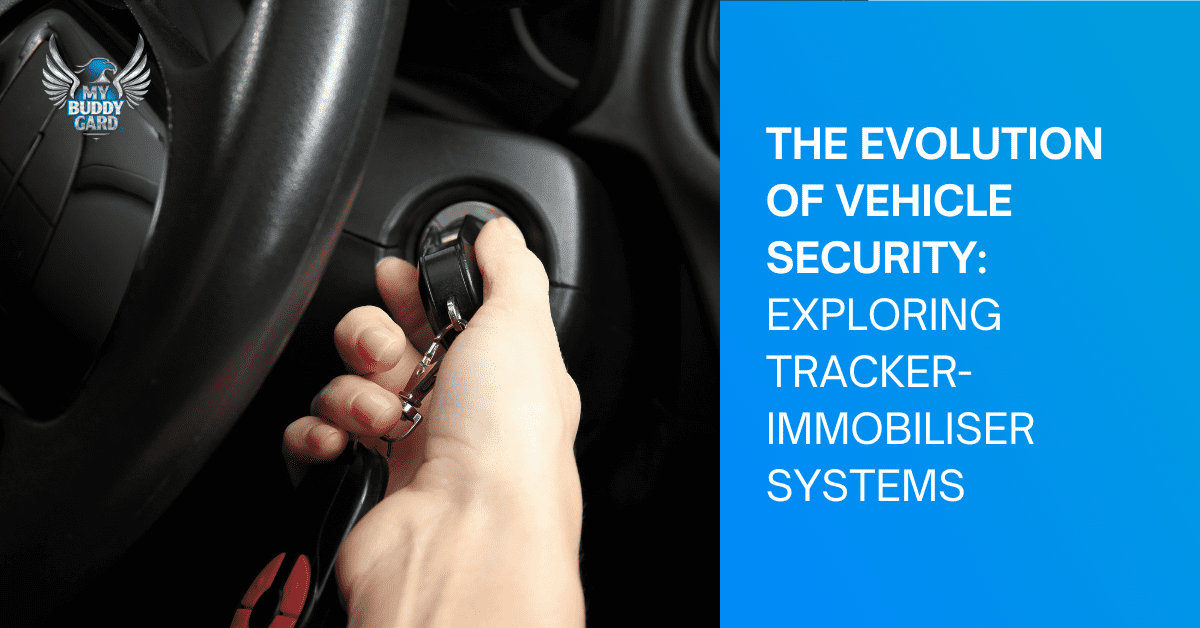Vehicle security has come a long way since the days of basic locks (think club locks) and alarms. With the increasing sophistication of thieves and the announcement of the Queensland Government’s Engine Immobiliser Subsidy Trial, the need for advanced security measures has become paramount. Enter tracker-immobiliser systems, a revolutionary advancement in vehicle security that combines GPS tracking with remote immobilisation.
In this article, we’ll take a journey through the evolution of vehicle security and explore how these systems have become a game-changer in deterring motor vehicle theft and especially sneak theft.
The Early Days:
In the past, vehicle security was primarily centered around mechanical locks and rudimentary alarm systems. While they provided a basic level of protection, determined thieves often found ways to bypass them, leaving car owners vulnerable to theft. The limitations of traditional security measures led to the development of more advanced solutions.
Enter Tracker-Immobiliser Systems:
Tracker-immobiliser systems represent the cutting edge of vehicle security technology. These systems consist of two main components: a GPS tracker and a remote immobilizer. The GPS tracker allows vehicle owners to pinpoint the location of their vehicle in real-time, making recovery efforts more effective. The remote immobiliser, on the other hand, gives owners the power to remotely disable their vehicle’s engine, effectively preventing theft in its tracks.
The Technology Behind the Systems:
GPS tracking relies on a network of satellites to accurately determine the location of a vehicle. This data is then transmitted to the owner’s device, providing real-time updates on the vehicle’s whereabouts. The remote immobilisation feature operates through secure communication protocols, allowing owners to send commands to disable the engine remotely, rendering the vehicle immobile.
Unveiling a new solution:
This advancement has revolutionized the landscape by effectively thwarting the strategy of sneak theft, where potential thieves intrude into homes, pilfer car keys while residents sleep, and make off with vehicles. Astonishingly, up to 70% of car thefts occur using this method. With built-in immobilization and convenient app-controlled activation and deactivation, tracker systems have definitively put an end to this trend. Regulatory authorities are even advocating for broader adoption of these devices, foreseeing a substantial reduction in overall vehicle theft rates as a direct result.
Real-World Success Stories:
The effectiveness of tracker-immobiliser systems is evident in numerous real-world success stories. Many stolen vehicles have been quickly recovered and returned to their owners, thanks to the precise location information provided by the GPS tracker. Thieves are deterred by the possibility of being caught and by the fact that they can’t easily drive away in a immobilised vehicle.
Conclusion:
As the world of vehicle security continues to evolve, tracker-immobiliser systems stand out as a pivotal development. With their combination of GPS tracking and remote immobilisation, these systems provide a level of security that was previously unimaginable. By effectively deterring thieves through psychological and technological means, these systems are revolutionizing the way we protect our motor vehicles.

